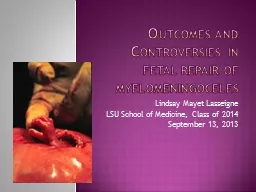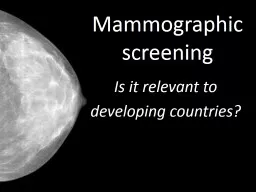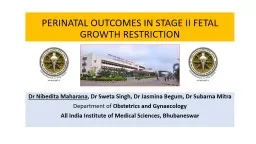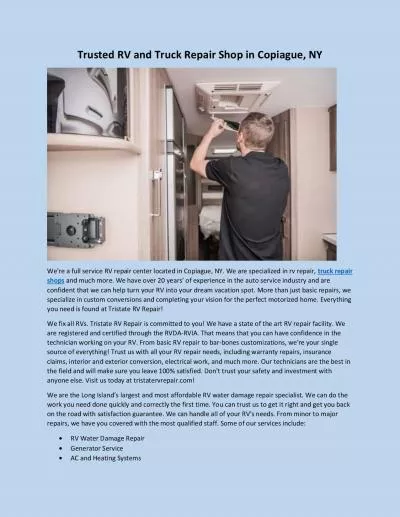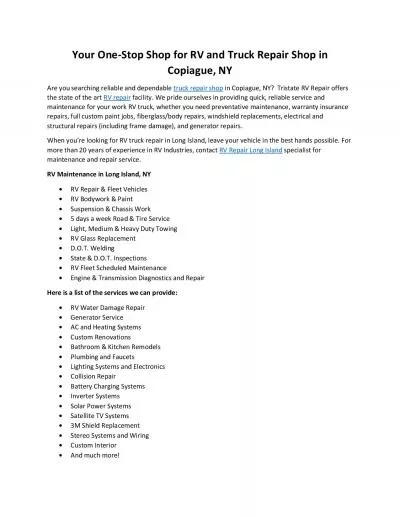PPT-Outcomes and Controversies in fetal repair of myelomeningoceles
Author : mitsue-stanley | Published Date : 2020-04-04
Lindsay Mayet Lasseigne LSU School of Medicine Class of 2014 September 13 2013 Objectives Discuss the basics of MMC Overview of the MOMS Trials Overview of the Endoscopic
Presentation Embed Code
Download Presentation
Download Presentation The PPT/PDF document " Outcomes and Controversies in fetal rep..." is the property of its rightful owner. Permission is granted to download and print the materials on this website for personal, non-commercial use only, and to display it on your personal computer provided you do not modify the materials and that you retain all copyright notices contained in the materials. By downloading content from our website, you accept the terms of this agreement.
Outcomes and Controversies in fetal repair of myelomeningoceles: Transcript
Download Rules Of Document
" Outcomes and Controversies in fetal repair of myelomeningoceles"The content belongs to its owner. You may download and print it for personal use, without modification, and keep all copyright notices. By downloading, you agree to these terms.
Related Documents

